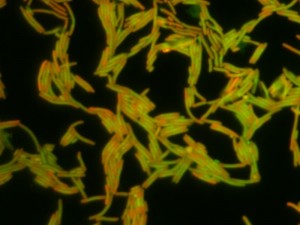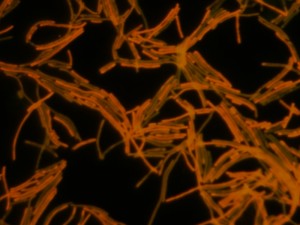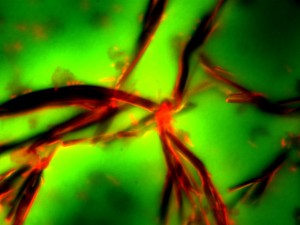The first two images show the changes that occur when E. coli O157:H7 strains are exposed to sublethal concentrations of the antibiotic ciprofloxacin. Ciprofloxacin induces cell elongation, also called filamentation. In addition, the cipro causes the bacteria to become more “sticky” and they line up forming interesting patterns, almost woven like a textile. Bacteria were stained with acridine orange stain and photographed by fluorescence at 1000 X magnification.
The third image shows EHEC secreted proteins that formed into rope-like structures as the sample dried out slowly under the cover slip. An artifact turned into art work!
This post was submitted by John K. Crane, MD, PhD.






Outstanding!
Yes, you can make “art” from anything. But rather than fiddling around with viruses and bacterias to make pretty pictures, what I would like to see is the full possible range of uses of these things to clean up our planet, and help the world’s ecosystems. So much of our research is based on extending Man’s time on Earth, whilst ignoring the actual quality of the environment that we exist in.
Man has raped and pillaged the resources of Earth, using up, in a couple of thousand years, what it has taken the planet thousands of millions of years to accumulate. In doing so, we have pushed every bio-system on Earth to the brink. It is high time that we totally change our collective attitude, and begin to act as custodians rather than conquerers.
mark – it’s art. shut your trap.